Japanese Chairs: A Blend of Traditional Craftsmanship and Contemporary Comfort
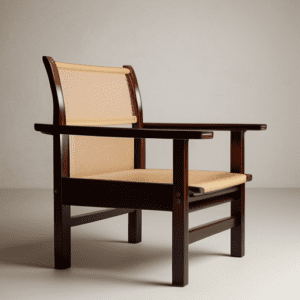

Enter the world of Japanese chairs, where traditional craftsmanship meets contemporary comfort. These finely produced goods not only showcase Japan’s rich cultural heritage, but also encourage practical excellence. From the Zen-inspired simplicity of a tatami chair to the sleek lines of a mid-century modern design, Japanese chairs effortlessly mix form and function. With an attractive and refined brand voice, our collection of Japanese chairs appeals to both aesthetics and comfort. Each chair demonstrates the expertise and passion of Japanese craftsmen who continue to carry down their knowledge through generations. Enjoy the serenity and tranquility that Japanese chairs provide to your living room. Whether you’re establishing a minimalist hideaway or adding an accent piece to a contemporary room, these chairs beautifully embody the spirit of Japanese design principles. Immerse yourself in the world of Japanese chairs, where history and innovation mix to generate visually stunning and useful furniture pieces. Discover the wonderful balance of traditional craftsmanship and modern comfort that distinguishes Japanese chairs.
Traditional Workmanship in Japanese Chairs
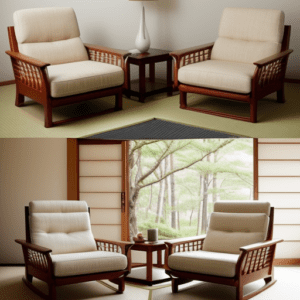

Japanese chairs are more than simply furniture; they are works of art that have been polished over many years. The effort that goes into making these chairs demonstrates the rigorous attention to detail that is strongly established in Japanese culture. Every chair is skillfully constructed by expert craftsmen who have mastered old methods handed down through the years. The final result is a chair that is not only visually stunning, but also pleasant and sturdy. Joinery skills are an integral aspect of traditional Japanese chair manufacturing. These methods demand the precise interlocking of several pieces of wood without the use of nails or screws. Instead, the joints are precisely cut and joined to make a sturdy framework. This attention to detail sets Japanese chairs different from other types of chairs and assures their endurance. Natural materials are also an essential part of traditional Japanese craftsmanship in chairs. Among the materials that Japanese artists typically employ in their work are solid wood, bamboo, and rattan; these materials not only increase the chair’s visual appeal but also raise its endurance. These materials have been carefully chosen and handled to display their inherent beauty and guarantee that they will age gracefully over time.
Distinctive Characteristics of Japanese Chairs
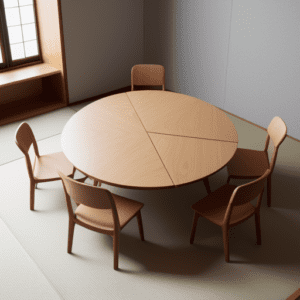

One of the characteristics that sets Japanese chairs unique is their modest sitting height. Western-style chairs are frequently meant for sitting at a table; in contrast, Japanese chairs are intended to be used on the floor. The low chair height not only fosters a more comfortable and casual reclining posture, but it also improves the impression of connection with the surrounding environment. Another defining trait of Japanese chairs is their simple design. Their chairs’ style emphasizes the subtle grace and underlying simplicity of Japanese design. Simple surfaces, clean lines, harmony, and balance are frequently the distinguishing qualities of Japanese chairs. The chair’s minimalist shape not only increases its visual appeal but also fosters peace in the environment where it is positioned. In addition to its low sitting height and minimalist form, Japanese chairs also usually combine aspects of nature into their design. This may require the use of natural materials like bamboo and wood, as well as designs that are inspired by flora, animals, and other parts of the natural world. By establishing a link with nature, these organic features give the chair its visual appeal while simultaneously encouraging a sense of serenity and tranquility in the area.
Materials Used in Japanese Chair Manufacture
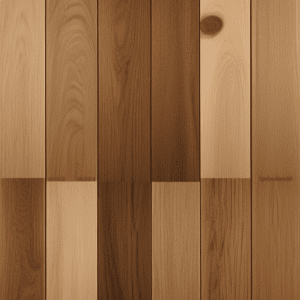

The material selection is an essential aspect of Japanese chair construction. Japanese craftspeople methodically pick materials that not only contribute to the chair’s beauty, but also assure its robustness and longevity. Different wood species, such as oak, cherry, and cedar, are selected according to their particular properties. These woods are generally kept untreated or polished with natural oils to retain their inherent beauty and enable them to age naturally over time. Bamboo is another material that’s often utilized in Japanese chair construction. Because of its strength and flexibility, bamboo is the perfect material to manufacture sturdy, lightweight chairs. Bamboo chairs are visually beautiful and give extra support and comfort. They are usually embellished with complex weaving patterns. This natural fiber is a fantastic option for manufacturing chairs that will sustain continuous usage because of its strength and durability. Rattan is another material often employed in Japanese chair making. A characteristic aspect of rattan chairs is their woven pattern, which not only adds visual appeal but also offers a flexible and comfortable sitting surface. Japanese chairs may be composed of solid wood, bamboo, or rattan, as well as materials like leather, cloth, or metal.
The Art of Japanese Chair Design
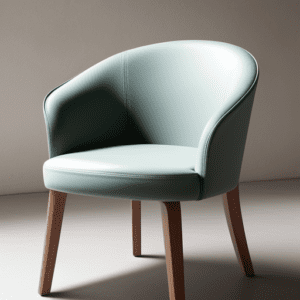

Japanese chair design is a real art form that blends beauty, usefulness, and cultural importance. Each chair has been deliberately constructed to give comfort and support in addition to elegance. Japanese designers devote special attention to every single detail, including the size, form, and material and finish choices of the chair. The outcome is a chair that looks fantastic and is a delight to sit in. One of the most fundamental elements of Japanese chair design is the notion of “Ma,” which refers to the space or gap between things. Because they recognize the significance of negative space as much as positive space, Japanese designers seek to create a feeling of harmony and balance in their designs. The clean lines and clear surfaces of Japanese chairs convey a feeling of tranquility and tranquillity. Another essential component of Japanese chair design is to take into consideration the human body’s natural motions. Japanese designers recognize that a chair should be more than simply a place to sit; it should support the user’s body in an ergonomic and natural manner. This is obvious in the curves and contours of Japanese chairs, which are meant to replicate the body’s natural shape while giving perfect support and comfort. In addition to beauty and usefulness, Japanese chair design typically contains cultural and symbolic aspects. Chairs may feature natural-inspired themes, such as cherry blossoms or bamboo, or they may combine traditional Japanese patterns and motifs. These cultural components offer visual appeal to the chair while also acting as a reminder of Japan’s rich cultural past.
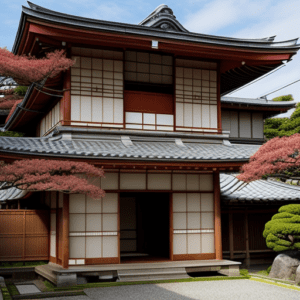

Japanese Chair Styles
Their Importance Japanese chairs come in a spectrum of styles, each with its own distinguishing characteristics and importance.
Tatami chairs are one of the most iconic Japanese chair forms. Inspired by the traditional Japanese tatami mat, these chairs feature a low sitting height and a folding backrest for convenient storage and modification. Tatami chairs are often employed in traditional Japanese houses and are related with a feeling of simplicity and Zen-like tranquility. Zaisu chairs are another famous Japanese chair form. Like tatami chairs, these chairs have a low sitting height, but they also feature a backrest that is slightly inclined forward to support the lower back and enhance posture. Zaisu chairs are widely used for meditation or relaxation, and they are connected with a peaceful and concentrated state of mind. For those searching for a more modern and contemporary chair, Japanese mid-century modern designs feature a clean and simple appearance. These chairs usually contain clean lines, organic curves, and the use of natural materials like wood and leather. Mid-century modern chairs are connected with refinement and elegance, and they are a popular option for anyone looking to integrate Japanese style into their contemporary décor.
Modern Comfort in Japanese Seats
Japanese chairs are heavily entrenched in history, however they also value contemporary comfort. Japanese designers know that a chair should not only be physically beautiful, but also pleasant and supportive. This is done by blending premium materials, ergonomic design, and state-of-the-art building procedures. Japanese chairs usually feature curved backrests and seats that match the natural curves of the body for best comfort and support. An additional layer of comfort is provided by employing high-density foam or other cushioning materials, which makes the chair pleasant even after lengthy hours of use. In addition to ergonomic design, Japanese chairs are appreciated for their lifespan and strength. Premium materials are carefully selected by Japanese craftsmen to guarantee that their products are both long-lasting and visually stunning. The chair’s components, which include solid wood, rattan, and bamboo, were selected for their durability and strength in order to guarantee that it would survive for many years. Furthermore, Japanese chair producers are continually creating new designs and experimenting with different materials and methods to increase comfort and usefulness. This means adopting customizable features like swivel bases or reclining backrests, as well as technology aspects like memory foam or heat-sensitive materials. These improvements guarantee that the chair fulfills the demands and desires of current customers by boosting its overall comfort and usability.
Balancing Legacy with Innovation in Japanese Chair
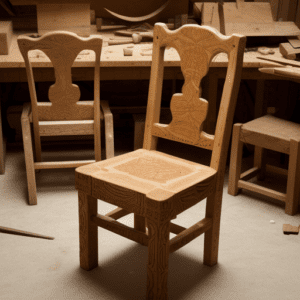

Making Japan’s chair manufacturing process involves a careful balancing act between innovation and tradition. Japanese chair manufacturers are adding new technology and methods into their production processes, alongside their traditional craftsmanship and design concepts, to increase the quality and utility of their chairs. On the one hand, Japanese chair producers continue to employ age-old, handmade processes that have been honed over many generations. Expert artisans methodically shape, carve, and finish each chair by hand, ensuring that no detail is neglected. This degree of workmanship not only increases the chair’s visual appeal but also assures its longevity. However, contemporary manufacturing methods and technology are increasingly being adopted by Japanese chair producers in an effort to enhance productivity and quality. This requires generating accurate and sophisticated chair designs using computer-aided design (CAD) software and automation technologies to accelerate the manufacturing process. These contemporary processes allow better uniformity and precision in the production process while keeping the distinctive character and beauty of handmade Japanese chairs. By blending history and contemporary, Japanese chair makers develop chairs that are not only useful and visually beautiful, but also symbolize the greatest aspects of both cultures. Ordering online could save you time and effort since it’s simple to have the chair delivered right to your home. When buying a Japanese chair, the vendor’s reputation and trustworthiness are crucial concerns. This will guarantee that the things you get are legitimate, top-notch, and meet up to your expectations. Whether you choose to purchase online or in person, investing in a Japanese chair is a trendy and comfy option. For many years to come, these chairs will improve your home’s visual appeal.
